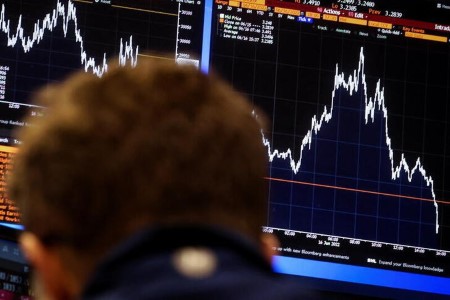




Quarterly Economic Growth Release: More BSP cuts to come
 DOWNLOAD
DOWNLOAD

Monthly Economic Update: Fed catches up
 DOWNLOAD
DOWNLOAD

Inflation Update: Steady and mellow
 DOWNLOAD
DOWNLOAD


Wall Street posts solid gains, as defensives, tech shine

June 23 (Reuters) – Wall Street’s main indexes posted solid gains on Thursday, fueled by strong performance from defensive and tech shares that outweighed declines for economically sensitive groups as worries persisted about a potential recession.
The benchmark S&P 500 swung between positive and negative during the session, but stocks picked up steam heading into the market’s close. Benchmark US Treasury yields fell to two-week lows, supporting tech and other rate-sensitive growth stocks.
Trading has remained volatile in the wake of the S&P 500 last week logging its biggest weekly percentage drop since March 2020. Investors are weighing how far stocks could fall after the index earlier this month fell over 20% from its January all-time high, confirming the common definition of a bear market.
“There is a tremendous amount of uncertainty about the outlook and so the market is confused,” said Walter Todd, chief investment officer at Greenwood Capital in South Carolina.
The Dow Jones Industrial Average rose 194.23 points, or 0.64%, to 30,677.36, the S&P 500 gained 35.84 points, or 0.95%, to 3,795.73 and the Nasdaq Composite added 179.11 points, or 1.62%, to 11,232.19.
In his second day of testifying before Congress, US central bank chief Jerome Powell said the Fed’s commitment to reining in 40-year-high inflation is “unconditional” but also comes with the risk of higher unemployment.
US business activity slowed considerably in June as high inflation and declining consumer confidence dampened demand across the board, a survey on Thursday showed.
“The Fed wants to see things start to slow and the data is starting to reflect that,” said James Ragan, director of wealth management research at D.A. Davidson.
Citigroup analysts are forecasting a near 50% probability of a global recession.
“Economic growth is slowing. Is it going to slow enough to go into a recession, that’s the big question,” Ragan said.
Defensive groups considered safer bets in rocky economic times were the top-performing S&P 500 sectors. Among them, utilities gained 2.4%, healthcare rose 2.2% and real estate added 2%.
The heavyweight tech sector rose 1.4%, with Microsoft (MSFT) gaining 2.3% and Apple (AAPL) up 2.2%.
The energy sector slumped 3.8%, continuing its recent pullback after soundly outperforming the market for most of 2022. Declines in Exxon Mobil XOM.N and Chevron (CVX) were the biggest individual drags on the S&P 500, with Exxon dropping 3% and Chevron falling 3.7%.
Other economically sensitive sectors also fell. Materials lost 1.4%, while industrials and financials dipped about 0.5% each.
Advancing issues outnumbered declining ones on the NYSE by a 1.41-to-1 ratio; on Nasdaq, a 1.67-to-1 ratio favored advancers.
The S&P 500 posted one new 52-week high and 40 new lows; the Nasdaq Composite recorded 32 new highs and 194 new lows.
About 12.4 billion shares changed hands in US exchanges, compared with the 12.5 billion daily average over the last 20 sessions.
(Reporting by Lewis Krauskopf in New York, Devik Jain and Sruthi Shankar in Bengaluru and Boleslaw Lasocki in Gdansk; Editing by Arun Koyyur and Cynthia Osterman)
This article originally appeared on reuters.com





 By Reuters
By Reuters